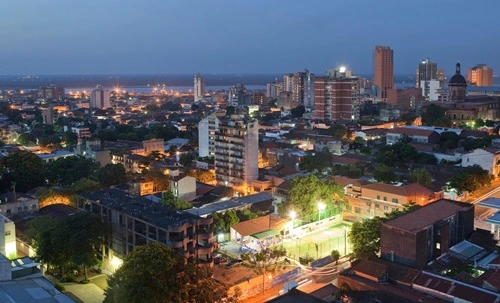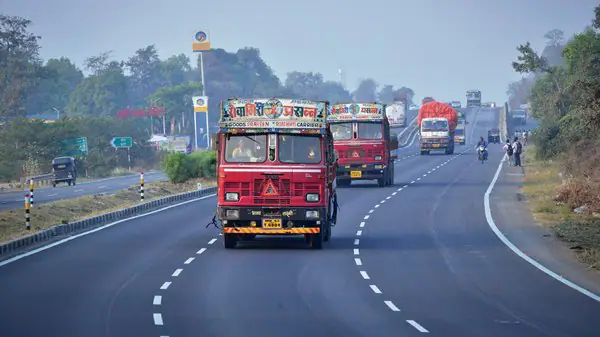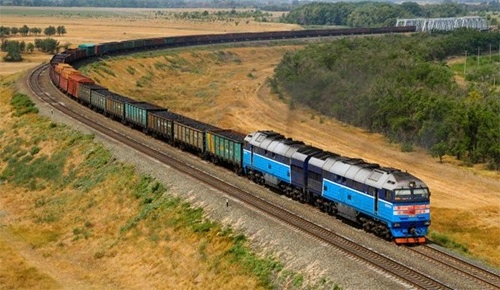Paraguay might be one of South America’s lesser-known countries, but it holds a wealth of surprises and unique cultural treasures. Known as the “Heart of South America” due to its central location, Paraguay offers an intriguing mix of history, nature, and vibrant traditions. Here are some of the most interesting and surprising facts about Paraguay that will give you a fresh look at this captivating country.

1. One of the Few Bilingual Nations in South America
Paraguay stands out in South America as one of the few countries where two languages, Spanish and Guarani, are both officially recognized. In fact, Guarani isn’t just a spoken language but an integral part of Paraguayan identity, with nearly 90% of the population speaking it. Spanish and Guarani are taught in schools, and the combination of both languages influences the local culture, arts, and traditions in unique ways.
2. Landlocked but Rich in Water Resources
Although Paraguay doesn’t have direct access to the ocean, it’s far from lacking in water resources. The Paraguay and Paraná rivers flow through the country, and they serve as major sources of hydroelectric power. Paraguay is home to one of the world’s largest hydroelectric power plants, the Itaipú Dam, which it shares with Brazil. This dam alone generates enough electricity to power Paraguay’s entire domestic needs, making Paraguay one of the world’s few countries to generate nearly all of its electricity from renewable sources.
3. No Active Volcanoes or Earthquakes
Unlike many South American countries, Paraguay has no active volcanoes or fault lines that would lead to earthquakes, making it one of the safest places from natural seismic activity on the continent. This geological stability makes Paraguay an attractive destination for people looking to avoid areas prone to such natural disasters.
4. Home to the World’s Largest Rodent Species
Paraguay is home to the capybara, the world’s largest rodent. These semi-aquatic mammals can weigh up to 140 pounds and are known for their social and relaxed nature. Often found near water bodies, capybaras are a common sight in Paraguay’s wetlands, particularly in the Gran Chaco region. Capybaras play an important role in Paraguay’s ecosystems and are protected by local conservation efforts.
5. The Only Country with a Two-Sided National Flag
Paraguay has a unique distinction among world flags: it’s the only national flag with different designs on the front and back. The front features the national coat of arms, which includes a star, a palm branch, and an olive branch, while the back displays the seal of the Treasury. This dual design reflects Paraguay’s cultural identity and pride, symbolizing peace, justice, and resilience.
6. Yerba Mate: A Social Ritual
Drinking yerba mate, a tea-like drink made from the leaves of the Ilex paraguariensis plant, is a social and cultural tradition in Paraguay. Paraguayans often drink tereré, a cold version of yerba mate, especially popular in Paraguay’s warm climate. Tereré is enjoyed with family and friends, typically shared from the same cup and straw (bombilla) in a ritual that symbolizes friendship, hospitality, and community.
7. The Elusive Gran Chaco: South America’s Second-Largest Forest
Covering much of Paraguay’s western region, the Gran Chaco is a vast, hot, and semi-arid forest. This region is one of the most biodiverse and remote areas in South America, home to unique wildlife such as jaguars, giant armadillos, and rare birds. However, deforestation in the Chaco poses a major environmental threat, as vast areas are cleared for agriculture each year. Environmental groups and indigenous communities are working hard to protect this remarkable ecosystem and preserve its biodiversity.
8. A Tradition of Unique Handicrafts: Ñandutí Lace
Paraguay has a rich tradition of crafts, particularly in textile arts, with ñandutí lace being one of the most iconic. Ñandutí, meaning “spider web” in Guarani, is a fine lacework that resembles a web and is typically woven by hand in vibrant colors and intricate patterns. This handicraft is a unique symbol of Paraguayan culture and has become a popular souvenir for tourists, representing the skilled craftsmanship and creativity of Paraguay’s artisans.
9. One of the Fastest Growing Economies in South America
Paraguay’s economy has shown remarkable growth in recent years, driven largely by agriculture, hydroelectric power, and a growing manufacturing sector. With fertile land and favorable conditions, Paraguay is one of the world’s largest exporters of soybeans, beef, and stevia. The country’s economic policies, tax incentives, and proximity to neighboring markets make it an attractive option for investors, contributing to its rapid economic development.
10. World’s Largest Waterfall System is Close By
Just a few hours away from Paraguay’s eastern border is the spectacular Iguazú Falls, the largest waterfall system in the world. The Iguazú Falls, which Paraguay shares with Argentina and Brazil, consist of 275 individual falls that span nearly two miles. The waterfall is accessible from Paraguay, making it a popular side trip for tourists visiting the country.
11. The Unique Mennonite Community in the Chaco Region
Paraguay’s remote Chaco region is home to a unique Mennonite community, established by settlers from Canada, Russia, and Germany in the early 20th century. These settlers adapted to the harsh conditions of the Chaco and established thriving agricultural communities. The Mennonites have had a significant influence on Paraguay’s agriculture, introducing advanced farming techniques and contributing to the country’s agricultural success. They maintain their own schools, churches, and governance, preserving a distinct way of life within Paraguay’s diverse cultural landscape.
12. A Country of Young People
Paraguay has one of the youngest populations in Latin America, with a median age of around 27 years. This youthful demographic brings energy and vitality to Paraguay’s workforce and culture, contributing to an innovative, tech-savvy population that’s eager to drive the country’s development forward. Education and job opportunities for young people are rapidly growing, especially in urban centers like Asunción.
13. Asunción: One of the Oldest Cities in South America
The capital city of Paraguay, Asunción, is one of the oldest cities in South America, founded in 1537 by Spanish settlers. Asunción played a key role in the Spanish colonization of the region and was an essential hub for expeditions. Today, Asunción blends colonial architecture with modern development, showcasing Paraguay’s rich history and growing cosmopolitan culture. The city has lively markets, historical sites, and a thriving art scene, making it a cultural centerpiece of the country.
Paraguay may not always be in the spotlight, but it offers a world of intrigue, beauty, and cultural depth waiting to be explored. From its dual-flag distinction to the vibrant traditions of Guarani language and tereré, Paraguay is a unique country with deep roots and forward-thinking aspirations. Whether it’s the ecological diversity of the Chaco, the architectural legacy of Asunción, or the social ritual of sharing mate, Paraguay is a hidden gem of South America that offers a fresh and inspiring travel experience for those willing to explore its heart.


